The late 19th century, was when India was awakening to its spiritual heritage, its pride of place among the nations of the world, during ancient times. People like Dayananda and Swami Vivekananda were spreading social consciousness among India, urging them to awake from their stupor. It was however, just the beginning, only the ground work had been done, the rising tide of nationalism was yet to surge.
While there was a mood of a national reawakening, it still remained dormant. Precisely around that time in 1883, at a small village near Nashik called Bhagur, Vinayak Damodar Savarkar was born on the 28th of May. Originally hailing from the Konkan, the Savarkars were quite influential in the final days of the Peshwas. Vinayak grew up amidst the chanting of Sanskrit slokas, and hearing tales from the Mahabharat, Ramayan and those of Shivaji and the Peshwas. A child prodigy, Vinayak composed poems at the age of 10, submitted them to newspapers and had an insatiable thirst for knowledge.
It was the time when the plague struck Maharashtra, and many families were forcibly evicted from their homes by the British authorities. The assassination of the Plague Commissioner Rand by the Chapekar brothers, and their subsequent trial and hanging, fired up Savarkar’s nationalist spirit. He swore to keep the revolutionary spirit alive, and not rest till the British were driven out from India. With his parents passing away, Vinayak was taken care of by his elder brother Ganesh Savarkar aka Babarao, who also influenced his thinking in a way.
Along with his brother, and two friends Mhaskar, Page, he formed the Mitra Mela (Band of Friends) in 1900 to promote nationalist feelings among the youth. This Mitra Mela would later become the Abhinava Bharat in 1904, whose aim was to liberate India through armed revolution. Nashik would be the starting point for Vinayak Savarkar, and his Mitra Mela began to occupy a vital space in public discourse. Along with his knowledge, erudition, he was also a brilliant orator, all of these qualities made Vinayak a born leader. One more aspect about the Mitra Mela, was that it had no caste distinctions, Savarkar was dead against the caste system and untouchability.
Savarkar married Yamunabai in 1901, and the subsequent year, he enrolled in Pune’s Fergusson College. His father in law was quite a rich and influential person, and he financially assisted Savarkar in his education. At Pune, Savarkar was very impressed with the extremist leaders in Congress, Tilak, Lala Lajpat Rai and Bipin Chandra Pal. The Swadeshi campaign, as also the partition of Bengal affected Savarkar deeply, and he also wrote regularly for Aryan, a hand written weekly started by him.
He was influenced by the revolutionary movements in Italy, US, and the works of Shakespeare, Milton, Kalidasa, and Bhavabhuti had a deep impact on him. The Mitra Mandal became the Abhinava Bharat in 1904, and the subsequent year he was deep into the Swadeshi movement, conducting bonfires of foreign goods and clothes. He passed his BA with distinction, and also proved to be a writer of repute composing ballads on Shivaji, Tanaji, and Baji Prabhu. Abhinava Bharat in a way was organized on the lines of Mazinni’s Young Italy or the various revolutionary outfits in Ireland, Russia.
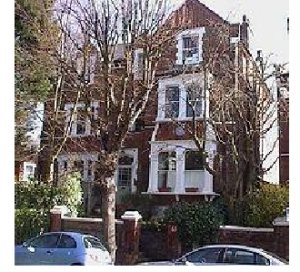 In 1906, he left for England, on a scholarship to study law, with assistance from Shyamji Krishna Verma. London, in those days was a meeting point for revolutionaries from all over the world. And Savarkar stayed in the India House that was founded by Shyamji, who had also founded the Home Rule Society in London in 1905. India House was a thriving hub of student and political activity, and soon Savarkar established the Free India Society in 1906 to organize Indian students fighting for complete independence. In his own words:
In 1906, he left for England, on a scholarship to study law, with assistance from Shyamji Krishna Verma. London, in those days was a meeting point for revolutionaries from all over the world. And Savarkar stayed in the India House that was founded by Shyamji, who had also founded the Home Rule Society in London in 1905. India House was a thriving hub of student and political activity, and soon Savarkar established the Free India Society in 1906 to organize Indian students fighting for complete independence. In his own words:
“We must stop complaining about this British officer or that officer, this law or that law. There would be no end to that. Our movement must not be limited to being against any particular law, but it must be for acquiring the authority to make laws itself. In other words, we want absolute independence.”
Bhai Parmanand, Lala Hardayal, Virendranath Chattopadhyaya (brother of Sarojini Naidu), Madame Bhikaji Cama, Senapati Bapat were some of the nationalists who came from there. It made the Indian students in Britian more proud of their heritage, culture and history, Dussehra was celebrated, anniversaries of Shivaji, Guru Gobind Singh were observed. Savarkar spread his revolutionary ideas through pamphlets, books, and articles. He translated the biography of Mazinni into Marathi and got it published through his brother. He learnt Gurumukhi, studied the Adi Granth, and appealed to the Sikh soldiers of their sense of duty.
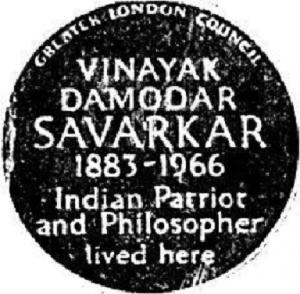 Savarkar dreamt of an 1857 style guerilla war for freedom, and after studying its history, he wrote “The History of War for Indian Independence,” and he was one of the first to call the 1857 Mutiny as India’s First War for Independence. The book was banned all over the British Empire for its incendiary content, and Madame Bhikaji Cama managed to get this published in France, Netherlands, and Germany. Savarkar also learnt the techniques of bomb making from a Russian revolutionary veteran, and he circulated a pamphlet on this. In 1909 Madan Lal Dhingra, one of his proteges, assassinated Sir Curzon Wylie, the British MP in a public meeting. While many condemned Dhingra’s action, Savarkar was one of the few who stood up for him, and fought with the British authorities in taking claim of his ashes.
Savarkar dreamt of an 1857 style guerilla war for freedom, and after studying its history, he wrote “The History of War for Indian Independence,” and he was one of the first to call the 1857 Mutiny as India’s First War for Independence. The book was banned all over the British Empire for its incendiary content, and Madame Bhikaji Cama managed to get this published in France, Netherlands, and Germany. Savarkar also learnt the techniques of bomb making from a Russian revolutionary veteran, and he circulated a pamphlet on this. In 1909 Madan Lal Dhingra, one of his proteges, assassinated Sir Curzon Wylie, the British MP in a public meeting. While many condemned Dhingra’s action, Savarkar was one of the few who stood up for him, and fought with the British authorities in taking claim of his ashes.
It however came at a terrible personal cost for Savarkar, India House was shut down following Wylie’s assassination. He met Gandhi in 1909 at London, but the ideological chasm was too large between both of them. Savarkar was however not a doctrinaire believer in violence, for him it was to be used only when necessary, as he said:
“We feel no special love for secret organizations or surprise and secret warfare. We hold that whenever open preaching and practicing of truth is banned by enthrone violence, then alone secret societies and warfare are justified to combat violence by force.”
In the meantime Lord Minto was planning to crush the independence movement, and Savarkar’s elder brother Babarao was sentenced to life, while his younger brother was arrested in the Nasik conspiracy case. On the other hand, the British were building up the case against Savarkar, for his involvement in revolutionary activities, waging war against the Crown, and distribution of arms. He was arrested in London in March 1910, and the Magistrate ruled that he should be extradited to India for further trial. Keeping in touch with a close friend, Savarkar asked him to inform of the ship’s likely route.
When the ship docked at Marseilles he jumped out of the porthole at the top of the water closet in the toilet into the sea. He managed to swim to shore in spite of the British in hot pursuit of him. Unfortunately, his friends Madame Cama and VV. Aiyar were late in arriving and Savarkar was caught by the authorities. It was a breach of international law as he was arrested by the British on foreign soil. France strongly protested over this breach of law, and the case went before the Permanent Court of International Arbitration. The Court observed that since France and Britain were collaborating on Savarkar’s issue and as his arrest was done without any fraud, the British authorities could take him to India for trial.
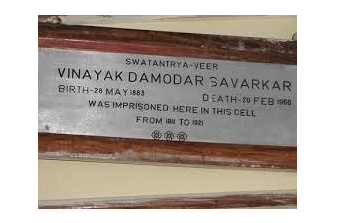 Savarkar reached Mumbai in July 1910, and was sent to Nasik jail, the stories of his attempted escape at Marseilles made him a hero of sorts. He refused to take part in the trial, saying he was entitled to asylum and protection in France. He was finally charged and sentenced to life imprisonment in the notorious Cellular Jail of Andaman and Nicobar Islands. On June 27, 1911 Savarkar was lodged in the steamer S.S.Maharajah, en route to the Andamans. The Cellular Jail was the Indian version of Devil’s Island, a notorious prison, filled with horrifying tales of torture and mistreatment.
Savarkar reached Mumbai in July 1910, and was sent to Nasik jail, the stories of his attempted escape at Marseilles made him a hero of sorts. He refused to take part in the trial, saying he was entitled to asylum and protection in France. He was finally charged and sentenced to life imprisonment in the notorious Cellular Jail of Andaman and Nicobar Islands. On June 27, 1911 Savarkar was lodged in the steamer S.S.Maharajah, en route to the Andamans. The Cellular Jail was the Indian version of Devil’s Island, a notorious prison, filled with horrifying tales of torture and mistreatment.
As he reached the Cellular Jail, his thoughts were more on how these islands, could be the outposts of a Free India. In a way it was prophetic too, as when Netaji began his long armed struggle, he first captured Andaman and Nicobar Islands, which he promptly renamed as Shahid and Swaraj. Cellular Jail was a literal hell on earth, the kind of place, you would not even wish for your worst enemies.
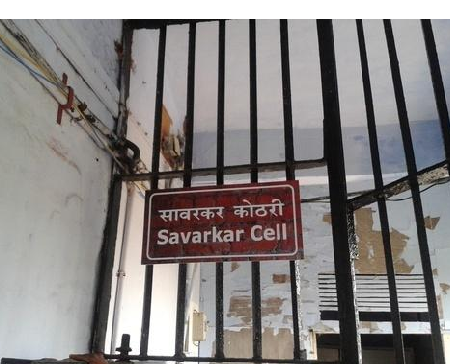 The jailor Barrie hated the revolutionaries, and inflicted the worst possible tortures on them. They were yoked like cattle to the oil mill, and made to work all day. The horrors of the Cellular Jail, were on par with those of Auschwitz, Devil’s Island and the Gulags of Russia. Imagine living a life of solitary confinement, for not just one or two years, but for 12 years, yes, that was the amount of time, Savarkar spent in solitary confinement. Given the task of chopping coconuts with a heavy mallet, Savarkar’s hands bled. He was yoked to the oil mill, and made to work hard. And yet despite all the indignities inflicted upon him, Savarkar, bore it with fortitude, patience and character.
The jailor Barrie hated the revolutionaries, and inflicted the worst possible tortures on them. They were yoked like cattle to the oil mill, and made to work all day. The horrors of the Cellular Jail, were on par with those of Auschwitz, Devil’s Island and the Gulags of Russia. Imagine living a life of solitary confinement, for not just one or two years, but for 12 years, yes, that was the amount of time, Savarkar spent in solitary confinement. Given the task of chopping coconuts with a heavy mallet, Savarkar’s hands bled. He was yoked to the oil mill, and made to work hard. And yet despite all the indignities inflicted upon him, Savarkar, bore it with fortitude, patience and character.
Savarkar not only bore the indignities inflicted on him, he also lifted up the spirits of his fellow prisoners. For most of them living a life, sapped out of energy, Savarkar’s very presence, lifted their spirits. Savarkar felt that Ujjain, which was in the center of India, was the right capital for it. Around the same time, an assassination attempt was made on Lord Hardinge. The man responsible for it Rash Behari Bose, fled to Japan, where he would later found the INA. In the meantime, Savarkar began to educate the prisoners on political science, economics, and Constitutional law. He fought with the authorities to secure the rights of prisoners, and give them the basic amenities. He impressed upon the prisoners, the need for education, especially on economics and constitutional law. He considered “Knowledge without action was lame and action without knowledge was limited”
Yogavasistha and the Imitation of Christ by Thomas Kempis, were two books that were Savarkar’s personal favorites. However Savarkar felt it was time, people in India got to know of the horrors of Cellular Jail. One Hotilal Verma, secretly managed to send a letter to Surendranath Banerjee, one of Savarkar’s staunch admirers, on the horros of the Cellular Jail. Indu Bhushan Roy and Ulaskar Dutt arrested for the Alipore bomb case, Nani Gopala, were some of those who had suffered the most.
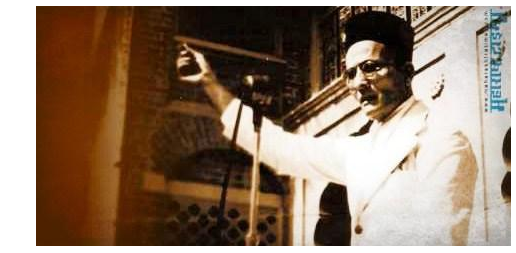 As the news of the horrors of the Cellular Jail, spread in the Indian press, there was massive outrage all over India. The Imperial Council questioned the British Government and public opinion began to grow against the atrocities. In the meantime, Savarkar along with Nani Gopala, went on a hunger strike, which they ended only after getting assurances from the authorities. Finally, faced with a hostile public opinion, stinging criticism in the press, the British government relented and decided to release those prisoners whose conduct they deemed satisfactory.
As the news of the horrors of the Cellular Jail, spread in the Indian press, there was massive outrage all over India. The Imperial Council questioned the British Government and public opinion began to grow against the atrocities. In the meantime, Savarkar along with Nani Gopala, went on a hunger strike, which they ended only after getting assurances from the authorities. Finally, faced with a hostile public opinion, stinging criticism in the press, the British government relented and decided to release those prisoners whose conduct they deemed satisfactory.
While in the Cellular Jail, Savarkar, made use of his solitary confinement to write. However, since no reading or writing material was available, he used the prison as his medium. The walls of the prison turned into pages, the stones and thorns became the pens, and he wrote no less than 10,000 lines of poetry. An epic ballad on Panipat, composed entirely on the walls of his prison, one of the greatest literary feats ever. He was one of the greatest writers ever, often rated equivalent to Kalidasa, by the Marathi critic Madkholkar. His magnum opus Kamala is often regarded as the Shakuntala of modern India, in its usage of similes, and its graceful composition. He also introduced a blank meter verse called Vinayak in Marathi poetry.
His long time in Andaman in general, and the solitary confinement in particular, began to bring in Savarkar, a philosophical outlook towards life. Having experienced the worst indignities and torture, for him death really held no fear. And this was the time, when he began to formulate the philosophy of Hindutva.
Bibliography: Veer Savarkar by Sanjeev Nayyar.
The article is being reproduced from author’s blog with his permission.
Disclaimer: The facts and opinions expressed within this article are the personal opinions of the author. IndiaFacts does not assume any responsibility or liability for the accuracy, completeness, suitability, or validity of any information in this article.
Working as an IT professional since 2000, writing code for a living, now taking the first steps to write books too. In the meantime, have been writing blogs also. Interest in history, music, movies, blogging, books.Settled in Hyderabad, the city of Pearls, Biryani, and Hi Tech. Latest Book: City of Victory: The Rise and Fall of Vijayanagara

